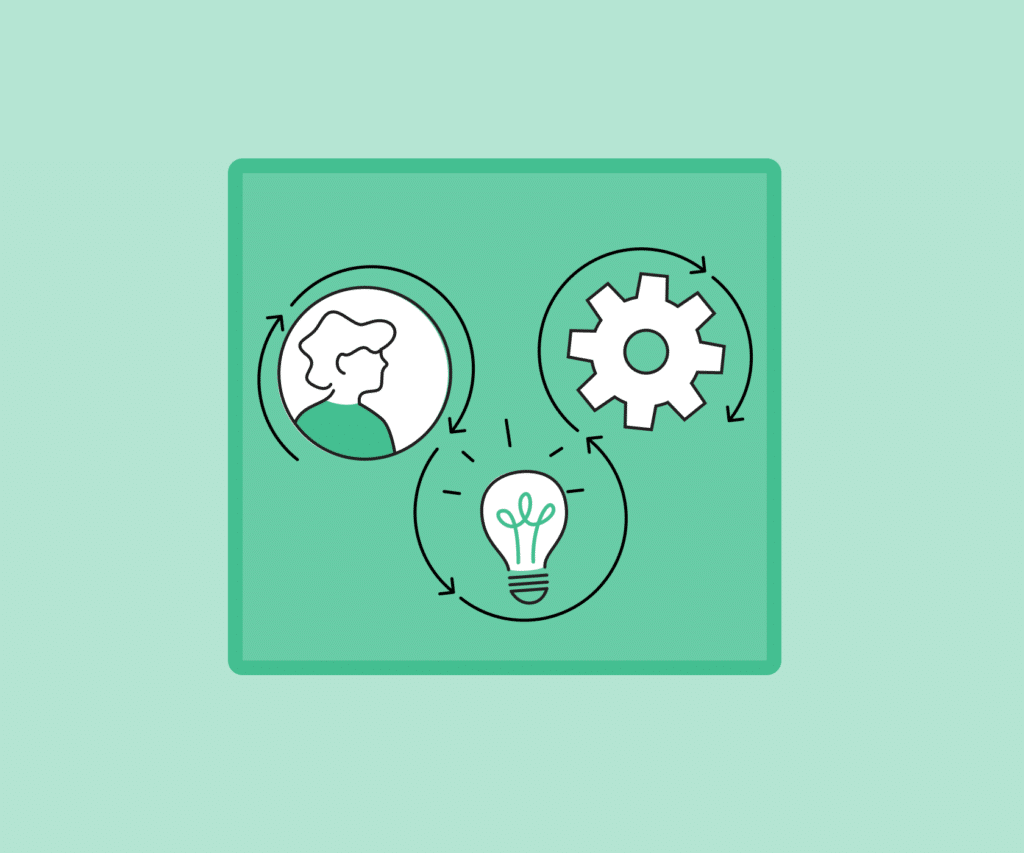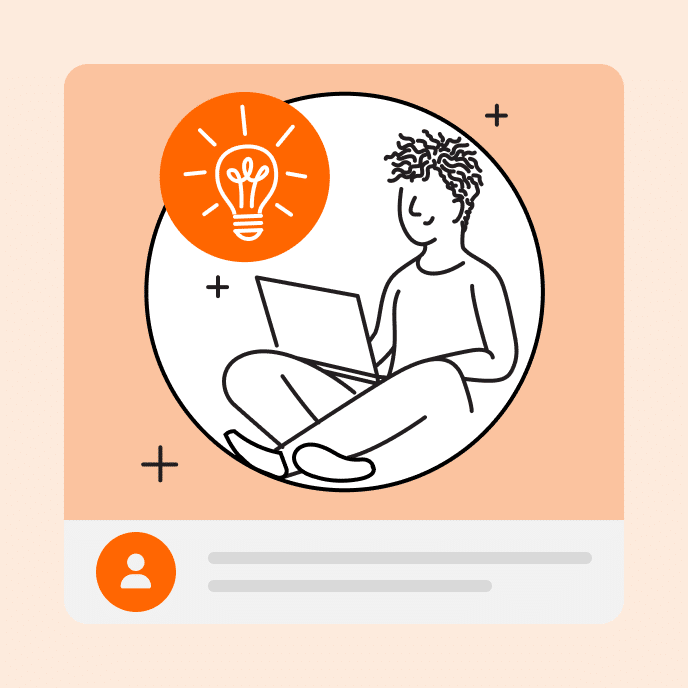Why Training Personas are the Key to Smarter Workplace Learning
Training personas help you design learning that fits every role. Explore strategies to personalize, engage, and boost results across your organization.

Don’t create training for everyone—create it for someone
Ever heard the saying, “When you try to reach everyone, you end up reaching no one”? That’s the challenge leaders face when developing a company-wide training program. Imagine attempting to create a one-size-fits-all training that applies to frontline workers, customer support agents, sales reps, and mid-level managers alike. Odds are, you’ll end up fulfilling the cliche.
So, how do you design training that resonates with multiple roles without watering it down for everyone, especially when time and resources are in short supply? That’s where training personas come in.
Training personas help instructional designers and subject matter experts identify different employee types and figure out what makes them tick—their needs, skills, motivations, and challenges. It’s the key to building personalized learning experiences without starting from scratch each time.
In this blog post, we’ll explore what learner personas are, why you should use them in your training program, and practical tips for developing personas that reflect real people.
Key Takeaways
- Personas make training personal. Move beyond generic learning by tailoring content to your audience’s real roles, needs, and goals.
- Better insights, better outcomes. Learner personas help pinpoint skill gaps, preferences, and motivators to help you design more effective training.
- Small effort, big impact. A small amount of upfront persona work can transform how your team builds and delivers training across the organization.
What are learner personas?
Just like marketing teams use buyer personas to understand customers, instructional designers develop learner personas to better understand the people they’re training. A learner persona is like a character profile. It’s meant to represent a group of employees who share common learning needs, job responsibilities, and backgrounds. But the goal isn’t to reduce complex individuals to types. It’s about reflecting the real learners in your workplace so you can design training that is meaningful to them.
Learner persona examples
Let’s say you’re creating software training for a new workplace tool. Here are a couple of examples of personas that might be helpful to keep in mind so you know who you’re targeting:
Deirdre, the tech-savvy analyst
She learns fast, values efficiency, and prefers self-paced modules.
Franklin, the on-the-go supervisor
He doesn’t have time for a lengthy training course and instead needs mobile-friendly, just-in-time modules.
What should a learner persona include?
Effective learner personas should include a mix of basic demographics and role-specific insights, such as:
- Job title and functions
- Technical proficiency
- Day-to-day responsibilities
- Preferred learning formats (asynchronous, hands-on, self-paced)
- Learning motivations (career growth, upskilling, performance targets)
- Common roadblocks (time, equipment, technical skills)
When you design for real people with real challenges, it makes training more targeted and relevant without having to design for each individual employee.
The benefits of training personas: Clarity, connection, and results
If you’ve ever had to develop training for a company-wide initiative, you know the frustration that comes when it falls flat with half the people you targeted. That’s not necessarily a referendum on the quality of the training materials. You can have an expertly designed training program that might not be aligned with the workers it was intended to serve. The disconnect often happens when it’s too technical for some, too basic for others, or simply not relevant to their job.
But when you create learning personas that ground your design in tangible needs, role-specific expectations, and audience preferences, the result is a learning experience that feels customized rather than generic.
Here’s how learner personas drive better results:
- Adaptable learning. When personas reflect reality, they help you adapt training to fit different learning styles. For example, visually-oriented learners might benefit from interactivity and graphs or diagrams, while field-based workers might prefer bite-sized microlearning accessible on mobile devices.
- Relevant content. Personas help you maintain focus on what matters to specific individuals. Remember that a sales rep doesn’t need the same training as a software engineer. Examples, case studies, and scenarios that feel familiar have more impact.
- Greater efficiency. When you develop personas beforehand, you streamline the process and avoid starting from scratch each time. The result is training modules not only aligned with specific needs but also adaptable to multiple audiences.
- Better engagement and knowledge retention. When learners see themselves in the training, they listen up, apply what they learned, and are more amenable to future training. Done well, personas strengthen the connection between the learner and the material.
The goal isn’t to make the training designer’s job more difficult or add unnecessary complexity to the equation. The goal is to make the training feel personal, purposeful, and practical.

Strategies for creating learner personas that work
It’s time to take the guesswork out of training design. Get to know your audience through listening, observing, and documenting. That way, you can translate your findings into something actionable. If you do your due diligence, learner personas can be a blueprint for designing training content that resonates and delivers results.
Here are four strategies for developing learner personas with purpose and precision:
1. Gather intel
The learners themselves are your best resource for getting information about your audience. You can accomplish this through employee surveys or one-on-one interviews.
If you’re designing for multiple departments, be sure to include team leaders and department heads to gain insights on specific roles and responsibilities.
Ask questions like:
- What’s a task you wish you could accomplish faster and with fewer errors?
- What was the last training session that stuck with you, and why?
- When you face issues or roadblocks, what kind of support do you wish you had?
- What’s your preferred method for troubleshooting? Do you ask team members for help, search for the solution online, or stick with it until you figure it out?
- What frustrates you most about current training content and formats?
Example:
You’ve been asked to design training for technical support and customer service. However, you learn via interviews that while both teams need training in conflict resolution and difficult conversations, they have different learning preferences.
For instance, the IT team wants asynchronous training that they can complete on their own time, while customer service reps would like to participate in role-playing scenarios to practice real-world conversations.
2. Spot the patterns
Once you’ve gathered key information about your audience, it’s time to start looking for patterns and common themes. But don’t make the mistake of categorizing your audience simply by their job titles or roles. Group responses by behavior, mindset, skill levels, learning preferences, and individual challenges.
A few persona categories might include:
- “New-to-the-role Natalie” – Just starting her new position and is already overwhelmed by all the information.
- “Hands-on Harriet” – Prefers role-playing and simulated scenarios to practice for real-world situations.
- “Expert Elanor” – Is highly proficient but needs targeted updates and refreshers.
Example:
As you pore over your findings, you uncover a few trends. New hires need more foundational technical skills than you realized, as well as confidence boosters. Long-time staff, on the other hand, are looking for more just-in-time resources they can use on the fly.
This allows you to create new personas, such as “The New Navigator,” who requires clear guidance on the basics, or “The Intrepid Improvisor” who values quick access to resources and flexibility.
Tip: Prioritize your learning needs. Three to five highly specific personas are more useful than 10 vague ones.
3. Match training needs to each persona
Now that you’ve clearly defined your personas, start connecting the dots between who they are and what they need to learn. What knowledge, skills, and behaviors do they need to succeed? Identify the gaps, and start mapping out how training can fill them. Then, ask yourself, how do they prefer to learn—visually, hands-on, or socially?
Here are some quick tips to map training needs:
- Match each persona to a set of role-specific learning objectives
- Identify which technical or soft skills are most critical for their success
- Choose formats that suit their work pace—e.g., microlearning vs. deep-dive modules
- Anticipate challenges each persona might face and build training to address them
Example:
You’re developing training for two very different roles: data analysts and marketing leaders. Your “Data Detective” persona might be a wizard with research and analysis, but could benefit from data storytelling or creating compelling visuals. A self-paced e-learning course with interactive data visualization tools could be a great fit here.
Meanwhile, the “Marketing Maven” may thrive in campaign strategy and brand messaging but needs support with presenting insights clearly or collaborating effectively with the IT team. Live virtual workshops or scenario-based simulations could provide the collaborative environment they need to grow.
When you effectively align training goals with the appropriate content type and the persona’s specific needs, you create relevant, actionable training that doesn’t feel generic or disconnected.
Keep training human-centered with authentic personas
Don’t forget that your organization is made of real people with unique backgrounds, experiences, skill levels, challenges, and goals. Authentic, realistic personas that mirror actual people are a meaningful way to bring empathy and strategic focus to your training programs and are more likely to have a lasting impact.
They help trainers and instructional designers make smarter decisions about content and delivery, they help prioritize what matters most for people, and they lead to real results. If you’re tired of generic training and ready to create something more genuine, start by getting to know your employees and let their stories shape the training that affects them.
Ready to take your audience understanding even further? Read our post, Know Your Audience: Critical Insights for Better Training Results.
You may also like

What We Learned at Articuland 2025
What we learned from our sold-out Articuland user conference—from community value to evolving industry standards.

